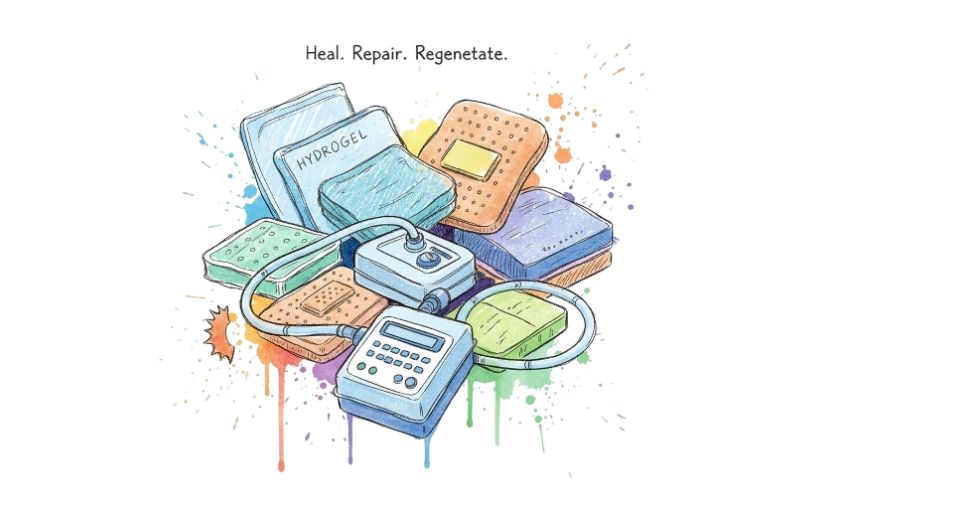
Sep 25, 2025

Metastat Insight, an established expert in healthcare market intelligence, recently issued a comprehensive report entitled global advanced wound care products market. The newly published study provides an in-depth discussion of the way advanced wound care solutions are revolutionizing treatment protocols, hospital operations, and patient outcomes globally. The research presents a vivid image of the varied product segments, use environments, and distribution channels that characterize the industry today.
The study charts the development of the advanced wound care products market worldwide, tracing the shift away from conventional dressings and towards highly specialized products intended to enhance optimal healing. It describes how moisture-balancing dressings, bioactive materials, negative pressure systems, and advanced skin substitutes are becoming integral elements of hospital, clinic, and homecare wound treatment programs. This view highlights the increasing significance of devices that not only protect wounds but also establish healing milieus to promote speedier recovery and reduce complications.
Metastat Insight's report provides a detailed examination of product segmentation in the market. Foam dressings, hydrocolloids, alginates, antimicrobial coverings, and transportable negative pressure systems are examined in terms of their clinical functions and performance advantages. The report also analyzes the incorporation of electronic monitoring solutions that enable caregivers to monitor recovery remotely, minimizing the necessity of regular on-site visits and facilitating data-driven decision-making. The advanced wound care products market is depicted as a dynamic industry where innovation, clinical science, and manufacturing excellence converge to provide highly effective solutions.
The document allocates considerable space to treatment algorithms for acute and chronic wound types. Surgical wounds, pressure injury, foot ulcers in diabetes, and venous leg ulcers are examined in respect of their specific treatment requirements, with product choice and application techniques matched for each condition. This level of detail confirms the complex nature of wound care planning and the potential for product flexibility between care environments.
Regional data is a significant component of the research, outlining how adoption levels differ between continents in relation to healthcare infrastructure, availability of advanced therapies, and the presence of clinical training. Hospital-based purchasing is predominant in some areas, while increased demand for home-care compatible products is evident in others. This geographic insight allows stakeholders to more closely match manufacturing capacity, distribution channels, and education programs with regional needs.
Metastat Insight's analysis also delves into the business aspects of the international advanced wound care product market. Production procedures, quality control systems, and packaging technology are analyzed to illustrate how reliability and sterility are maintained throughout each phase of the supply chain. Cold chain compliance, shelf-life management, and quick delivery systems are identified as essential elements that provide timely availability for immediate clinical use.
Competitive profiling in the report offers in-depth details of prominent manufacturers and upcoming players. Company initiatives involve investing in R&D pipelines, partnerships with healthcare facilities, and new territory expansion. These profiles identify how competition encourages constant product development and educational efforts in reaching out to healthcare providers.
The report also covers clinician training, caregiver education, and patient compliance programs as critical to importance. Specialized wound care products require focused application techniques, and the report indicates how manufacturers aid healthcare teams with workshops, online tutorials, and in-service education. Education emphasis guarantees innovations result in actual improvements in healing rates and quality of life.
There is a separate section given to increasing focus on eco-friendly product development. Biodegradability of materials, recyclability of packaging, and efficient use of resources in manufacturing are given prominence as part of the industry's commitment to sustainability on an ongoing basis. These activities not only meet environmental agendas but also address heightened expectations among healthcare providers and procurement organizations for greener alternatives.
Metastat Insight's report additionally takes into account the incorporation of advanced wound care products into value-based healthcare systems. Payers and hospitals are becoming more interested in those solutions that decrease hospital stays, decrease readmissions, and reduce complications, and the report looks at how advanced therapies drive those goals.
Overall, the international advanced wound care products market, as outlined by Metastat Insight, is an extremely specialized and innovation-led area of the healthcare market. The study offers an in-depth perspective on product categories, clinical uses, distribution channels, and sustainability practices defining the industry's future. By providing these insights, Metastat Insight equips manufacturers, healthcare professionals, and policymakers with the data they need to navigate a market that continues to evolve wound care practice and advance standards of patient treatment globally.
Drop us an email at:
Call us on:
+1 5186502376
+91 73850 57479